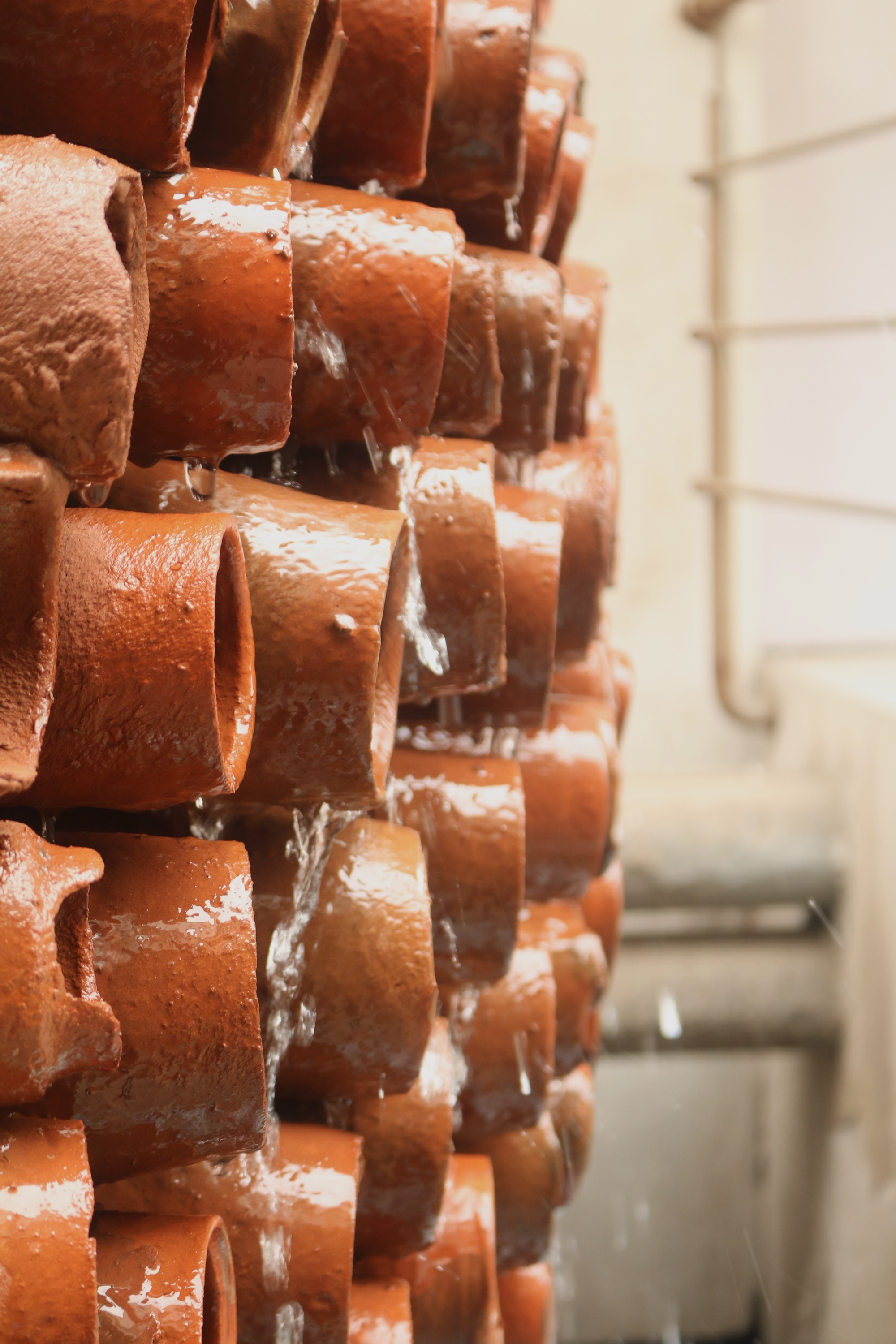- Sustainable Planet -
- 3mins -
- 1,792 views
Check out the coolest air conditioner in India — it runs without electricity!
This Eco-friendly low-energy outdoor cooling installation uses technology dating back to Egyptian times.
Innovative architects design zero electricity air conditioner to combat the relentless Indian heat
The temperature during the day doesn’t seem to stop rising in the summer in India, and installing big air conditioning systems is both uneconomical and energy inefficient for a majority of the population. Working under such overheated conditions takes a toll on the health of the employees, which affects productivity — problems which were also faced at the factory of Deki Electronics in Uttar Pradesh. They called in a group of innovative architects who came up with an energy efficient, economical and artistic solution to overcome these challenges.
The design was inspired by the structure of a beehive, using environment-friendly earthen cones
Excessive heat released from the Genset* at the entrance in the external area of the factory of Deki Electronics, in Uttar Pradesh, India, had reduced productivity to a minimum. This was also heating up the entire driveway, making the exterior envelope of the building even hotter, hence reducing its efficiency and increasing the air conditioning load of the building.
*A Genset is an electric generator which runs on traditional fuels such as gasoline or diesel and is employed to provide continuous power where a mains supply can not be relied upon, or where it is nonexistent.
A sustainable and inexpensive alternative was required, and the team at Ant Studio used the ancient method of Evaporative cooling to provide a low energy and effective solution. This technique, tracing back to the Egyptian period, cools down surroundings with the help of water and local materials.
A thrust of hot air facilitates the cooling when used as a fan mechanism. Evaporative cooling needs air force. This design uses the air velocity from the genset to its advantage. The design was inspired by the structure of a beehive, using environment-friendly earthen cones to create an aesthetic prototype.
The design and size of the conical components were customised through advanced computational analysis and modern calibration techniques. The thickness and the length of the material were modified with CFD analysis.
The geometry of the pots and the stacked form provided a larger surface area for cooling while also ensuring that the air does not bounce back to the Genset. This was achieved by aligning the stacking of the pots to the air flow.
Source: Ant-Studio

Tests are being carried out to see if this installation can be adapted to the indoor environment
The design was inspired by the structure of a beehive, using environment-friendly earthen cones to create an aesthetic prototype. The design and size of the conical components were customised through advanced computational analysis and modern calibration techniques.
The thickness and the length of the material were modified with CFD analysis. The geometry of the pots and the stacked form provided a larger surface area for cooling while also ensuring that the air does not bounce back to the Genset. This was achieved by aligning the stacking of the pots to the air flow.
The prototype was tested before being installed in the external driveway. The temperature of the air flow around the installation was recorded after it was set up. It was noticed that the hot air entering the installation was above 50 degrees Celsius at a velocity of 10m/sec.
Water recycled from the factory at room temperature was allowed to run on the surface of the cylinders using a motor. This process cooled the hot air passing through the earthen pots. It was observed that after achieving the cooling effect, the temperature around the set up dropped down to 36 degrees Celsius while the temperature outside remained high at 42 degrees Celsius. The air flow was recorded as 4m/sec.
The temperature drops by 6-8 degrees around the installation when the atmospheric temperature is above 40 degrees. Overall the temperature drops from almost 50 degrees. While recycled water might need regular maintenance to clean the pores on the exterior surface, regular water is recommended for long term performance.
In India, generator systems are usually placed in setback areas where loading and unloading takes place. Due to the shortage of electrical supply, these Gensets run for certain hours in a day. This low-energy and cost-efficient solution is easy to build and provides cooling in external environments, especially in industrial Outdoor set-ups in hot and dry climate.
The installation can also be converted into a zero-energy prototype which would require manual pouring of water over the pots. This can be done in areas where there is shortage of power supply, but it is not an ideal solution.
Tests are being carried out to see if this installation can be used internally, and how it can be adapted to the indoor environment.
Source: Ant-Studio


